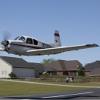Retractable Step Makes a Difference
-
Members Online
- Zippy_Bird
- Av8rjm
- kevinw
- richardbrochu27
- acekng1
- Stubby
- Lptoro
- Schllc
- Ryan ORL
- cferr59
- ArtVandelay
- Utah20Gflyer
- M20E for me
- Steve Dawson
- Shadrach
- 802flyer
- FlyWalt
- Fix
- FlyingDude
- eman1200
- avanti
- Huckster79
- MB65E
- AndreiC
- CChris
- phrogpilot73
- Rmnpilot
- L39Driver
- Austin305Rocket
- Kelpro999
- tankles
- MikeOH
- natdm
- thomas1142
- Mellow_Mooney
- Ibra
- Bike_rider
- wombat
- 00-Negative
- hubcap


Recommended Posts
Join the conversation
You can post now and register later. If you have an account, sign in now to post with your account.